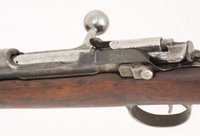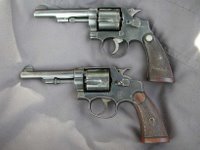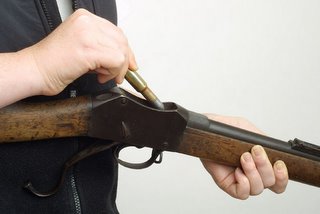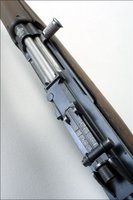Meanwhile, the need for shotguns had outstripped the supply of Model 1897's and Model 12's, as well as Remington Model 10's were also pressed into service.
In World War Two, the shotgun was again called to duty, with the Winchesters joined by Ithaca, Stevens, Savage, and the Remington Model 11. The latter shotgun, a John Moses Browning design, was notable for being the first self-loading shotgun.

RIGHT: Detail of Remington 11 receiver. Photo by Oleg Volk.
Browning had shopped the design to Winchester first, as he had all his previous longarm designs, but this time around they declined to pay royalties on the novel weapon and so he next shopped it to Winchester's arch-rival, Remington. Before Remington could enter negotiations their president died, and Browning instead took the gun to Fabrique Nationale, the company originally formed by the Belgian government and Ludwig Loewe to produce Mausers for the Belgian army. Browning had worked with them in the past, selling them several autopistol designs, one of which, a Model 1910, fired the shot that ignited World War One.
FN produced the shotgun as the Auto-Five, and production was licensed to Remington as the Model 11. It was a robust weapon, operating on the long-recoil principle, but was obviously designed as a sporting weapon rather than a military one, requiring tools for disassembly and reassembly. The one pictured above wears the "flaming bomb" U.S. Ordnance mark. Its serial number dates it to 1943, and it was probably used to guard a naval installation, or perhaps as a shipboard weapon.

LEFT: Detail of U.S. Ordnance markings on receiver. Photo by Oleg Volk.
U.S. military use of the scattergun continues to this day, with Remington, Mossberg, and Benelli shotguns being used in a variety of roles, from house-to-house fighting in the Middle East, to its traditional role as a weapon for facilities guards, to specialized short versions used as breaching weapons, for blowing locks and hinges off doors in close-quarters battle in urban settings.



















